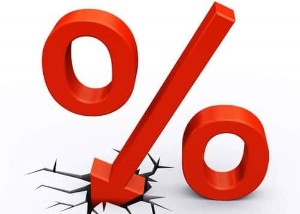
In fact, ASB chief economist Nick Tuffley says broad-based price rises in some sectors of the economy could indicate to the RBNZ a drop in inflation is stalling.
Although the country’s inflation figures are the lowest since June 2021 at 4%, most of the drop has been from imported goods inflation. Tradables inflation fell to 1.6% - well below the 2.2% some economists were predicting.
However, domestic inflation came in at 5.8%, 0.5% above the RBNZ’s February estimate. It is not enough for the RBNZ to even glance at a lower OCR.
Housing and household utilities were the biggest contributors to the annual inflation rate, Stats NZ says. This was due to rising prices for rent, construction of new houses and rates. Rents rose 4.7% in the 12 months to March this year quarter, while construction of new houses and rates increased 3.3% and 9.8% respectively.
Tuffley says the risk is that it will now take longer for the RBNZ to be confident that inflation is trending back towards the midpoint of the 1-3% inflation target, on a sustained basis.
“Absent of clear evidence that domestic and core inflation measures are heading back to target, the risk is clearly skewed to the RBNZ joining the slower to lower camp of central banks.
“Patience in the pursuit of sustained low inflation is, in our view, likely to guide the RBNZ’s actions and narrative throughout much of this year,” he says.
Activity data are weak, which should start to translate more obviously into pricing data, Tuffley says. And although yesterday’s data are still consistent with headline inflation being back within the target band by the third quarter of this year, it highlights the risk that this doesn’t occur.
“As a result, we now think the RBNZ will wait until February next year to cut the OCR,” he says.
BNZ head of research Stephen Toplis also thinks the latest GDP figures show the inflation decline took a pause in the quarter. nuisance
“While we believe there is nothing in that data that might spook the central bank, equally, there is nothing in the data that will have the RBNZ scurrying to bring forward its rate cut agenda.
“We still believe the RBNZ can cut rates before the end of this year but that’s because we, and the Reserve Bank, are forecasting annual inflation will be well within its 1-3% target band when the September quarter CPI is published in October.”
He says BNZ’s initial expectation is that prices will rise 0.5% in the June quarter taking the annual inflation reading down to 3.4%.
Chances of rate cuts pared back
Meanwhile the wholesale market is removing the risk of rate cuts, with the realisation the US Federal Reserve may not cut any time soon.
Until recently, the market had a full 25bp OCR rate cut priced into August. It has been pared back to 13bps, with a 50% chance of it happening.
November is more interesting. Kiwibank is optimistically expecting a 25bp cut, but The market had a whopping 66bps priced in. “Way, way too much,” Jarrod Kerr, Kiwibank’s chief economist, says. “Now at 39bps (5.11%), we see rates continuing to push back up towards 5.25%.”
He says February next year is more fairly priced at 58bps (two cuts), and April has three 25bp cuts to 4.75%. “This is exactly in line with our expectations.
“Beyond April, the market doesn’t have enough cuts priced in. The terminal rate is about 4%, whereas we expect the RBNZ to head back to neutral, about 2.5-3%.”
Kerr says there is plenty of room for two- to three-year rates to drop. And that means lower fixed rates on mortgages, and term deposits.




Comments
No comments yet.
Sign In to add your comment